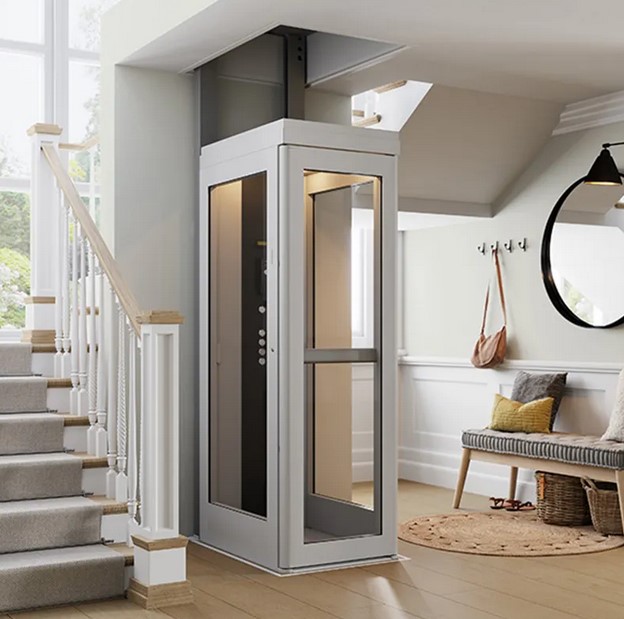Top Lift Companies in London: Offering High Quality Installations and Upkeep
Top Lift Companies in London: Offering High Quality Installations and Upkeep
Blog Article
Digging Into the Globe of Elevators: Usual Concerns Faced by Numerous Lift Systems
As we browse with the vertical transportation systems of modern buildings, elevators stand out as a vital element of our everyday lives. From hydraulic lifts to traction systems and machine-room-less layouts, each lift type comes with its set of typical concerns.
Hydraulic Lifts
Hydraulic lifts, usually chosen for low-rise structures, utilize fluid stress to manage the motion of the lift cars and truck (lift repair companies). This mechanism involves a hydraulic pump pressing oil right into a cyndrical tube, causing the lift to move in the wanted direction. While hydraulic elevators are recognized for their smooth and silent operation, they do include their very own set of typical concerns
One widespread problem with hydraulic elevators is oil leak. The seals in the hydraulic system can wear gradually, bring about oil infiltration. If left unaddressed, this not only creates a mess however can likewise affect the elevator's performance. Additionally, issues with the control system, such as faulty valves or a malfunctioning pump, can trigger disruptions in the lift's movement.
Regular maintenance and timely repairs are important to make sure the smooth functioning of hydraulic elevators. By resolving these common problems proactively, structure owners can minimize downtime and ensure the safety and security and performance of their vertical transportation system.
Grip Elevators
When thinking about vertical transportation systems in buildings, another usual kind apart from hydraulic lifts is the grip elevator. Grip elevators run making use of a system of ropes and counterweights that move the lift cars and truck by clutching onto the hoist ropes. This system permits smoother and quicker upright transport compared to hydraulic systems.
One of the typical issues faced by grip elevators is rope wear. The continuous activity of the ropes within the grip system can lead to damage gradually, potentially causing the lift to breakdown or come to be unsafe for usage. Normal assessments and upkeep of the ropes are important to make certain the elevator's proper functioning and safety and security.
One more problem that grip lifts might come across is connected to the control system. Troubles with the control system can cause concerns such as unpredictable movement, hold-ups in feedback times, and even total closures. Routine testing and maintenance of the control system are important to protect against such issues and make sure the lift's integrity.
Machine-Room-Less (MRL) Elevators

One of the crucial parts of MRL elevators is the portable gearless grip maker that is mounted within the hoistway. see this website This machine efficiently drives the lift cars and truck without the demand for large equipment located in conventional traction lifts. Additionally, MRL elevators typically use a counterweight system to balance the automobile, additional boosting their energy performance.
In spite of their benefits, MRL elevators might face obstacles connected to upkeep and repair because of the confined area for tools installation. Ease of access for servicing parts within the shaft can be limited, calling for specialized training for specialists. Proper maintenance timetables and regular evaluations are critical to make sure the continued smooth procedure of MRL elevators.
Overloading and Weight Limitation Issues
Are lifts geared up to handle excess weight lots successfully and securely? Overloading and weight limit issues are crucial problems in elevator procedures. Lift makers layout lifts with particular weight capacities to ensure passenger safety and security and devices durability. Going beyond these weight limitations can cause numerous problems, including mechanical failings, delays, and safety and security dangers.
When lifts are overwhelmed, it puts extreme pressure on the motor, cables, and various other parts, possibly triggering failures or breakdowns. If they detect excess weight, security systems such as sensing units and overload sensors are in location to avoid elevators from relocating. Additionally, exceeding weight restrictions can cause enhanced power usage and damage on the lift system.
To reduce overloading concerns, constructing supervisors must prominently present weight link limits in lifts and enlighten occupants on the significance of adhering to these restrictions - lift repair companies. Routine upkeep checks by certified technicians can likewise assist ensure that elevators are operating within risk-free weight criteria. By dealing with overloading and weight limit problems proactively, structure proprietors can boost lift safety and security and efficiency
Electrical System Failures
Surpassing weight limits in elevators can not just bring about mechanical problems but additionally possibly add to electrical system failures within the lift infrastructure. Electrical system failings are a vital issue in elevator operation, as they can trigger unforeseen closures, recommended you read malfunctions, and even safety and security dangers. One common electric problem is the overheating of parts due to excessive current flow caused by overloading the lift past its capacity. This can result in damage to the electric motor, circuitry, or control systems, causing costly repair services and downtime.
Routine maintenance and examinations are critical to identify and resolve possible electrical concerns promptly, making sure the secure and efficient procedure of elevator systems. By adhering to weight restrictions and conducting regular electrical system checks, structure owners can reduce the threat of electric failings in elevators.
Final Thought

Hydraulic elevators, often liked for low-rise buildings, make use of fluid pressure to manage the motion of the elevator vehicle.When taking into consideration vertical transport systems in structures, another common type apart from hydraulic elevators is the traction lift. Traction lifts run utilizing a system of ropes and counterweights that relocate the elevator car by grasping onto the hoist ropes. Unlike traditional elevators that need a separate equipment area to house the equipment, MRL lifts incorporate most of the elements within the shaft, removing the demand for a dedicated maker room.In conclusion, elevators deal with usual problems such as hydraulic breakdowns, traction system failures, and electrical system issues.
Report this page